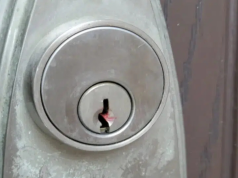Losing a dog is one of the most profound heartbreaks a pet owner can endure.
They’re not just pets — they’re family members, confidants, and companions who greet you with wagging tails and unconditional love.
As much as we wish they could stay with us forever, their lives are beautifully short. And when their time begins to draw near, they often communicate in quiet, subtle ways — not with words, but through changes in behavior, energy, and body.
While aging and illness affect every dog differently, there are common signs that your beloved companion may be nearing the end of their life.
Recognizing these signs isn’t about giving up — it’s about honoring their journey and ensuring their final days are filled with comfort, dignity, and love.
Here are 11 telltale signs to watch for — so you can be fully present when your dog needs you most.
1. Extreme Fatigue or Weakness
Your once-energetic pup now spends most of the day lying down.
They struggle to stand, wobble when walking, or seem too tired to lift their head.
This profound lethargy is often one of the first signs that your dog’s body is shutting down.
Their muscles weaken, and even small movements become exhausting.
💡 What you can do: Provide soft bedding, help them reposition, and keep them warm.
2. Loss of Appetite
Dogs are usually enthusiastic about food — so when they start refusing meals or treats, it’s a red flag.
In the final stages of life, dogs lose interest in eating and drinking.
This can lead to dehydration and weight loss, accelerating their decline.
💡 Tip: Offer small amounts of high-value foods like boiled chicken, canned food, or bone broth — warmed to enhance aroma.
3. Trouble Breathing
Labored or irregular breathing is a serious sign.
You may notice:
- Rapid, shallow breaths
- Long pauses between breaths (apnea)
- Gasping or gagging
- A “death rattle” (gurgling sound) in the final hours
This happens as the body weakens and organs begin to fail.
🚨 When to act: If breathing is extremely labored or painful, contact your vet immediately.
4. Changes in Bathroom Habits
As mobility and muscle control decline, your dog may:
- Have accidents indoors (even if previously house-trained)
- Struggle to squat or lift their leg
- Become constipated or incontinent
They may also stop signaling when they need to go outside.
💡 Comfort tip: Use pee pads, diapers, or soft bedding to keep them clean and prevent sores.
5. Unusual Behavior or Withdrawal
A dog nearing the end of life may withdraw from family, hide, or seek solitude.
They may:
- Avoid interaction
- Sleep more than usual
- Seem confused or disoriented
- No longer respond to their name
This isn’t rejection — it’s their way of conerving energy and coping with internal changes.
❤️ How to respond: Respect their space, but stay nearby. Your quiet presence is comforting.
6. Loss of Interest in Favorite Activities
The dog who once raced to the door at the sound of a leash now lies still.
They no longer care about toys, walks, or visitors.
When your dog stops engaging in things they once loved, it’s a sign they’re no longer getting joy from the world around them.
7. Noticeable Weight Loss and Muscle Wasting
Even if they’re still eating a little, your dog may rapidly lose weight — especially muscle mass.
Their ribs, spine, and hips become more prominent.
This is due to the body breaking down tissue for energy as it shuts down.
8. Inability to Stand or Move Comfortably
Your dog may try to stand but collapse, or they may not attempt to move at all.
Arthritis, nerve damage, or general weakness can make movement painful or impossible.
💡 Support tip: Use slings or towels to help them walk or go outside. Keep their bed close to food and water.
9. Changes in Body Temperature
As circulation slows, your dog may feel cold to the touch, especially in the ears, paws, and tail.
Their body may also struggle to regulate temperature — leading to shivering or excessive panting.
🔥 Comfort measure: Use warm blankets (not heating pads, which can burn) to keep them cozy.
10. Glazed Eyes or Lack of Focus
Their eyes may appear cloudy, unfocused, or glassy.
They may not track movement or seem “checked out.”
This can be due to reduced brain function, dehydration, or low blood pressure.
11. Seeking Quiet or “Finding a Place”
In their final days, dogs often seek out quiet, hidden places — under beds, in closets, or behind furniture.
This instinctual behavior — seen in wild animals — is their way of preparing for the end.
While it’s natural, you can gently encourage them to stay in a familiar, comfortable space with you.
What You Can Do: Being There at the End
When you recognize these signs, your role shifts from caregiver to compassionate companion.
Here’s how to help:
- Stay close — your presence is their comfort
- Keep them clean and dry — prevent pressure sores
- Offer water — even if just a few drops from a spoon
- Talk and touch them gently — they can still hear and feel love
- Consult your vet — about pain management, euthanasia, or hospice care
💬 Remember: Choosing euthanasia is not giving up — it’s one of the most loving decisions you can make to prevent suffering.
Final Thoughts: Love Is the Last Gift You Give
No list can fully prepare your heart for saying goodbye.
But by recognizing the signs, you can ensure your dog’s final days are peaceful, dignified, and full of love.
They gave you years of loyalty, joy, and unwavering affection.
Now, your job is to return that love — all the way to the end.
So sit with them.
Hold them.
Whisper, “I’m here.”
Because in their final moments, there’s no greater comfort than being with the person who loves them most.
Goodbye, sweet friend. You were the best dog — and you’ll be so deeply missed.










